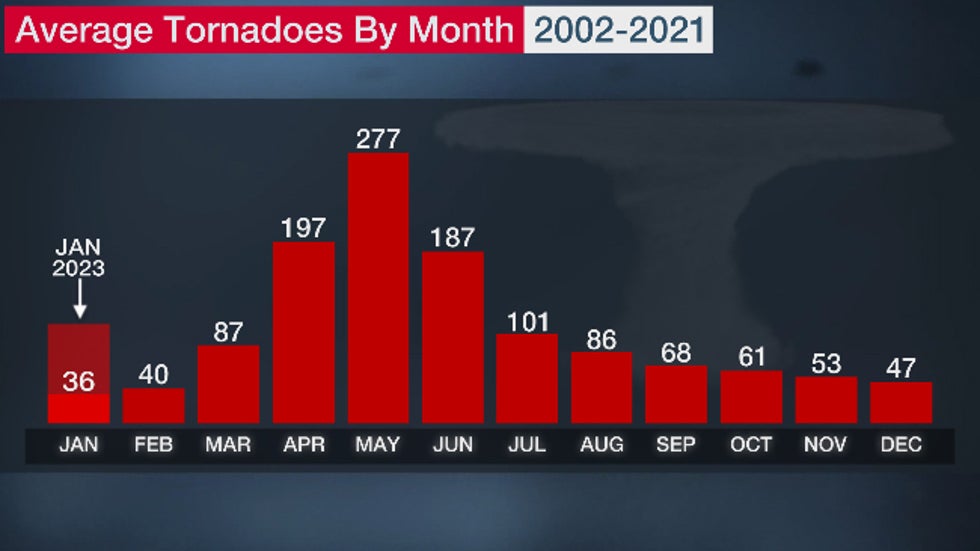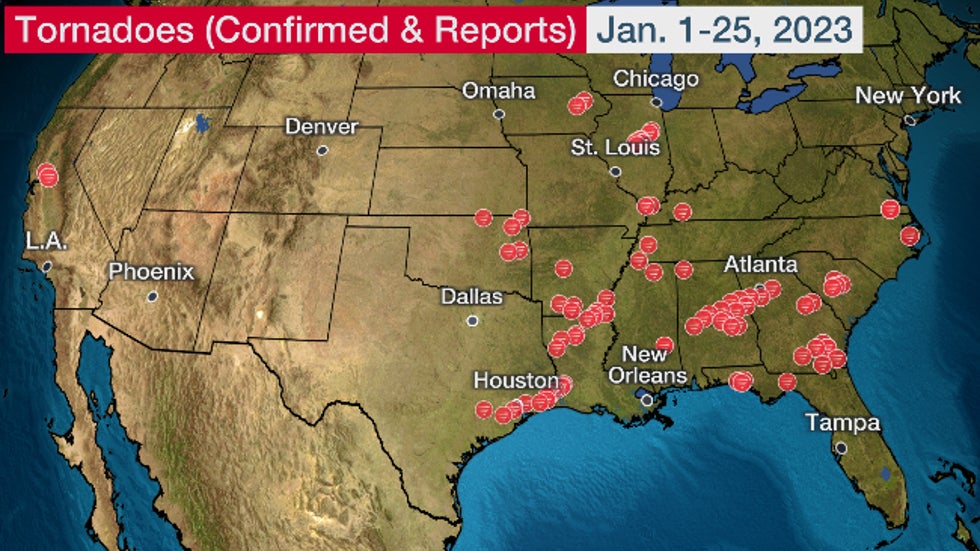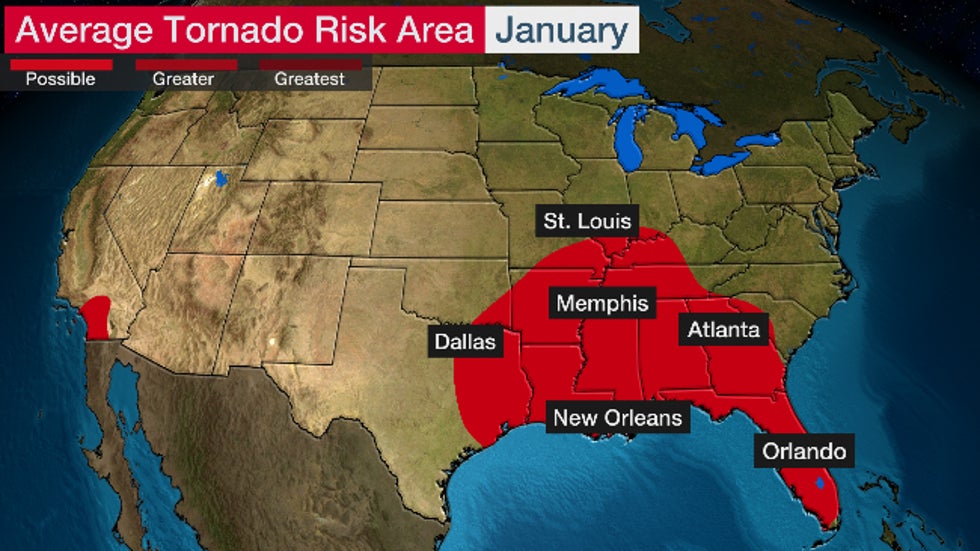Jonathan Erdman
Over 100 January tornadoes have been confirmed so far in the United States this month, a tally that has been exceeded only twice in 74 years of records.
Through Jan. 23, at least 102 tornadoes have been confirmed in the month, Storm Prediction Center meteorologist Evan Bentley tweeted Tuesday.
This total doesn't include tornadoes that tore through parts of the Southeast Jan. 24 and 25, including parts of the Houston metro area.
Bentley pointed out that only two other Januaries since 1950 had as many as 100 tornadoes – 2017 (137 tornadoes) and 1999 (214). This is about three times the average for the entire month, and is typical of an average July.
 Average tornado counts over 20 years, 2002-2021, with the estimated January 2023 confirmed tornado count highlighted at left, as of Jan. 25.
Average tornado counts over 20 years, 2002-2021, with the estimated January 2023 confirmed tornado count highlighted at left, as of Jan. 25.Not Just In The South
The majority of this January's tornadoes have been in the South, as the preliminary map below shows.
The largest outbreaks in the month were from Jan. 2-4 (58 tornadoes) and Jan. 12 (38). An EF3 tornado on Jan. 12 claimed seven lives in Alabama.
But not all of the month's tornadoes have been in the South.
Two tornadoes in Iowa on Jan. 16 were the state's first January tornadoes since 1967.
Nine tornadoes touched down in central Illinois on Jan. 3, the most single-day January tornadoes in the state in 34 years, according to the National Weather Service.
 This map shows both confirmed tornadoes and some preliminary reports of tornadoes in January 2023 through the morning of Jan. 25. Some of the Jan. 24-25 tornado reports are plotted, and some that haven't yet been confirmed may not yet be on this map.
This map shows both confirmed tornadoes and some preliminary reports of tornadoes in January 2023 through the morning of Jan. 25. Some of the Jan. 24-25 tornado reports are plotted, and some that haven't yet been confirmed may not yet be on this map.Why So Many In January?
As we alluded to earlier, it's typical to have at least a few tornadoes in the U.S. each January.
Usually, January tornadoes are confined to the Deep South and Gulf Coast. That's because Arctic cold air is typically dominant and expansive over at least the northern U.S., and occasionally plunges deep into the South, pushing any warm and humid air out.

This January, however, has been one of the warmest on record over much of the South, Northeast and Midwest, according to the Southeast Regional Climate Center.
Typical for winter, the jet stream has also been active and strong, pivoting out of the Desert Southwest into the central and southern U.S.
When that happens, more humid air from the Gulf of Mexico quickly rushes north. You then have the combination of wind shear and instability needed to generate severe thunderstorms and tornadoes.
It's a reminder that tornadoes can happen any time of the year in the U.S. when conditions are in place, even during a month more notorious for snow and cold.
The Weather Company’s primary journalistic mission is to report on breaking weather news, the environment and the importance of science to our lives. This story does not necessarily represent the position of our parent company, IBM.
The Weather Company’s primary journalistic mission is to report on breaking weather news, the environment and the importance of science to our lives. This story does not necessarily represent the position of our parent company, IBM.

No comments:
Post a Comment